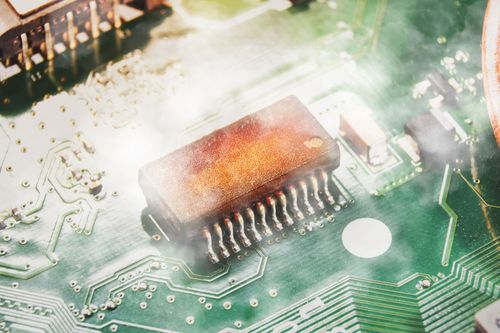
The Critical Role of Environmental Factors
Environmental factors such as temperature, humidity, and exposure to chemicals are pivotal in determining the reliability of electronic systems. These factors can accelerate the degradation process, leading to potential failures that compromise the functionality of electronic devices. Understanding these environmental influences is essential for developing strategies to mitigate their impact and enhance the durability of electronic components.
Why Elevated Temperatures and Humidity Pose a Challenge?
Temperature and humidity are two of the most influential environmental factors affecting electronic reliability. Here's how they can cause issues:
- Accelerated Aging: Higher temperatures increase the rate of chemical reactions within electronic components. This acceleration can lead to faster degradation of materials, such as solder joints and insulating layers, ultimately shortening the lifespan of the device.
- Thermal Expansion: Electronic components are made from various materials, each with their own coefficient of thermal expansion. When these materials expand at different rates due to heating, it creates mechanical stress. Over time, this stress can cause solder joints to crack or other connections to fail, leading to malfunctions.
- Impact of Humidity: High humidity can lead to moisture ingress into electronic systems, which can cause corrosion and create conductive pathways that lead to short circuits. The presence of moisture can also interact with any remaining flux residue, potentially degrading insulation resistance and leading to electrical leakage or failure.
- Synergistic Effects of Temperature and Humidity: When both temperature and humidity are present, the risk of reliability issues increases significantly. For example, flux residues left on a circuit board can absorb moisture, which, when combined with elevated temperatures, can lead to corrosion, dendritic growth, or even complete circuit failure.
Applying Research Insights to Improve Reliability
At Magnalytix, we take these environmental factors seriously. The insights provided by university research, as well as our own research and development team, guide our approach to testing and improving the reliability of electronic systems. By understanding how temperature, humidity, and other environmental factors affect electronic components, we can develop targeted solutions to mitigate these risks. Our testing methodologies, such as Surface Insulation Resistance (SIR), Ion Chromatography (IC), and C3 testing, are designed to identify potential failure points and ensure that your electronic systems can withstand the challenges posed by different environments.
Conclusion
Environmental factors are a significant determinant of electronic reliability. By staying informed about the impact of temperature, humidity, and other environmental conditions, we can better protect electronic systems from premature failure. At Magnalytix, we are committed to providing comprehensive solutions that enhance the reliability and longevity of your electronics, regardless of the environment in which they operate.
Moreover, our detailed reports and consultation services offer an added layer of value. When you work with Magnalytix, you gain access to the wisdom of experts like Dr. Mike Bixenman, who brings over 30 years of experience in the field of electronic reliability. His insights, along with those of our seasoned team, provide actionable recommendations on how to enhance the reliability and longevity of your electronic systems.
Stay tuned for more insights and updates on how we can help you achieve unparalleled reliability in your electronics. For more information about our services and how we can assist you, contact us. Together, we can build electronics that are built to last, even in the most challenging conditions.